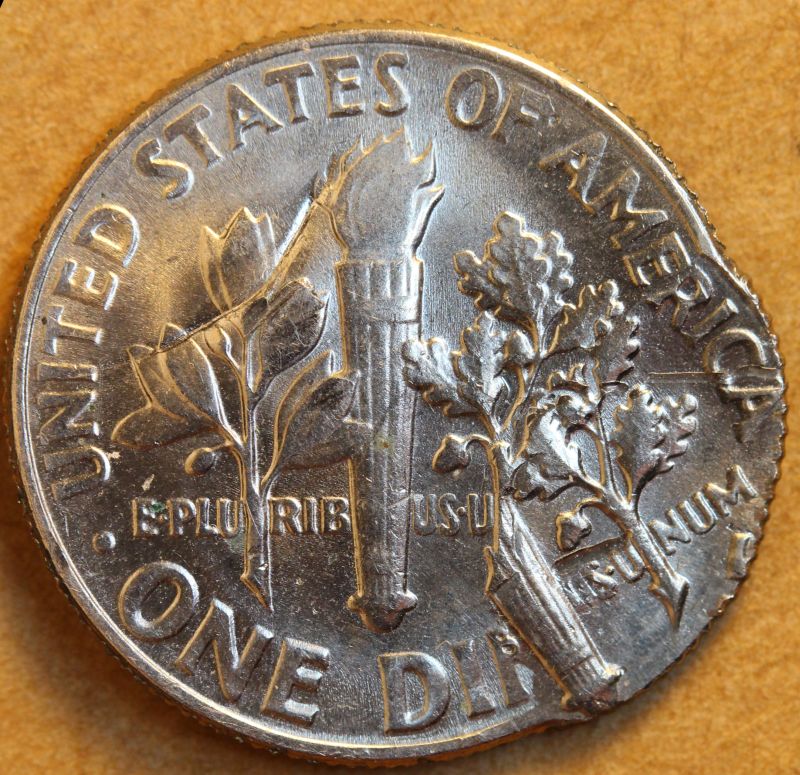Part VI. Striking Errors:
Indents:
External disc impressions
Definition: An impression on the underside of a broadstrike or off-center coin generated by a coin or planchet positioned just outside the striking chamber. The hammer die forces the expanded perimeter of a broadstrike or the protruding portion of an off-center planchet down onto the externally positioned disc. The result is a crescentic, half-moon shaped, or bell-shaped indentation that lies lateral to the die-struck lower face. The area above the indentation is forced upward, creating a type of forced cupping.


After a normal first strike, this 1998 cent rotated almost 180 degrees. The next strike was off-center and overlapped by two previously-struck cents. The area lying outside the second strike was pushed upward at 4:30 (first-strike clock position) by a coin or planchet lying just outside the striking chamber. A crescentic indentation runs through the first-strike letters OF AM.


After a normal first strike, this 1969-D dime was struck 20% off-center while overlain by a previously-struck dime in the northeast quadrant. Prior to the second strike, minimum die clearance increased by more than the thickness of a dime, generating an invisible strike in areas where there was no intrusive object to take up the excess space. The intrusive, previously struck dime in the northeast permitted an opposing area of die-struck design to strike up on the reverse face. An underlying coin or planchet located just outside the striking chamber at the opposite pole allowed a second-strike design rim and a few interior design elements to strike up on the side of Roosevelt’s face. The externally positioned disc generated a thin crescentic indentation on the reverse face that runs through the olive sprig. This area of the dime is tipped up slightly from the resistance generated by the underlying disc.